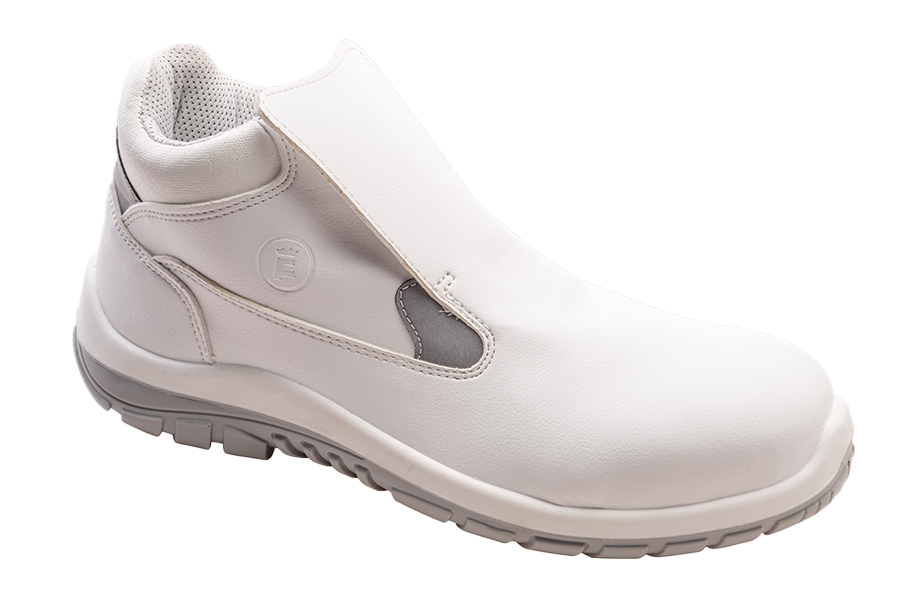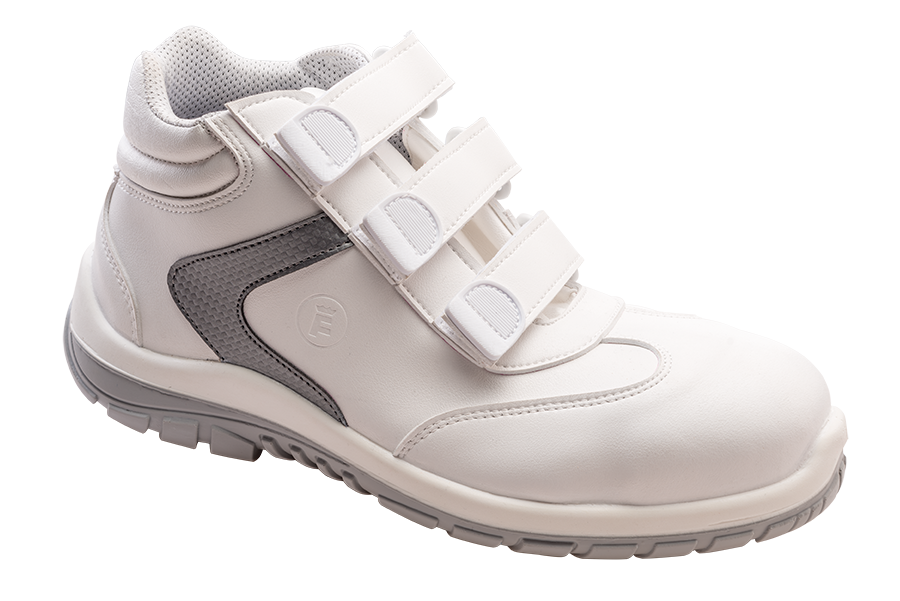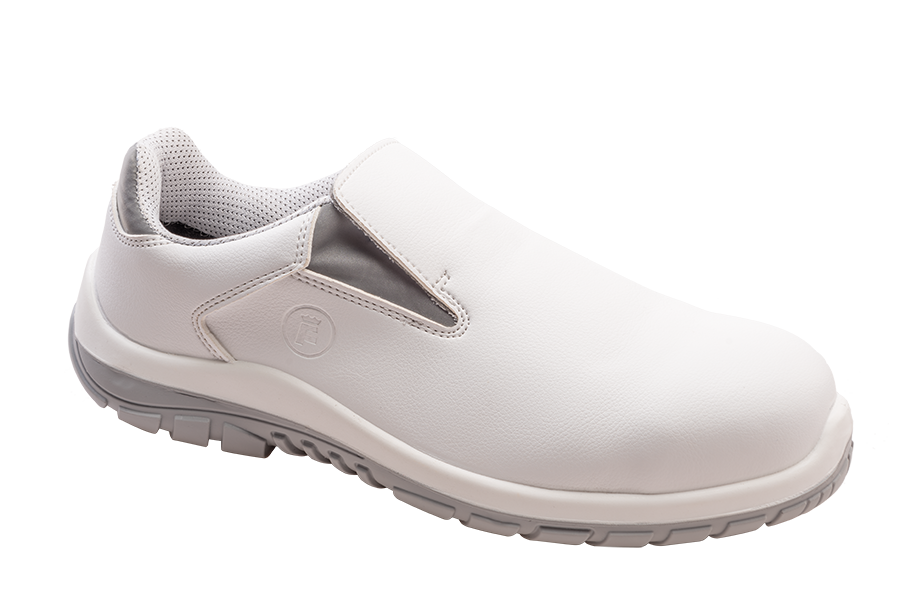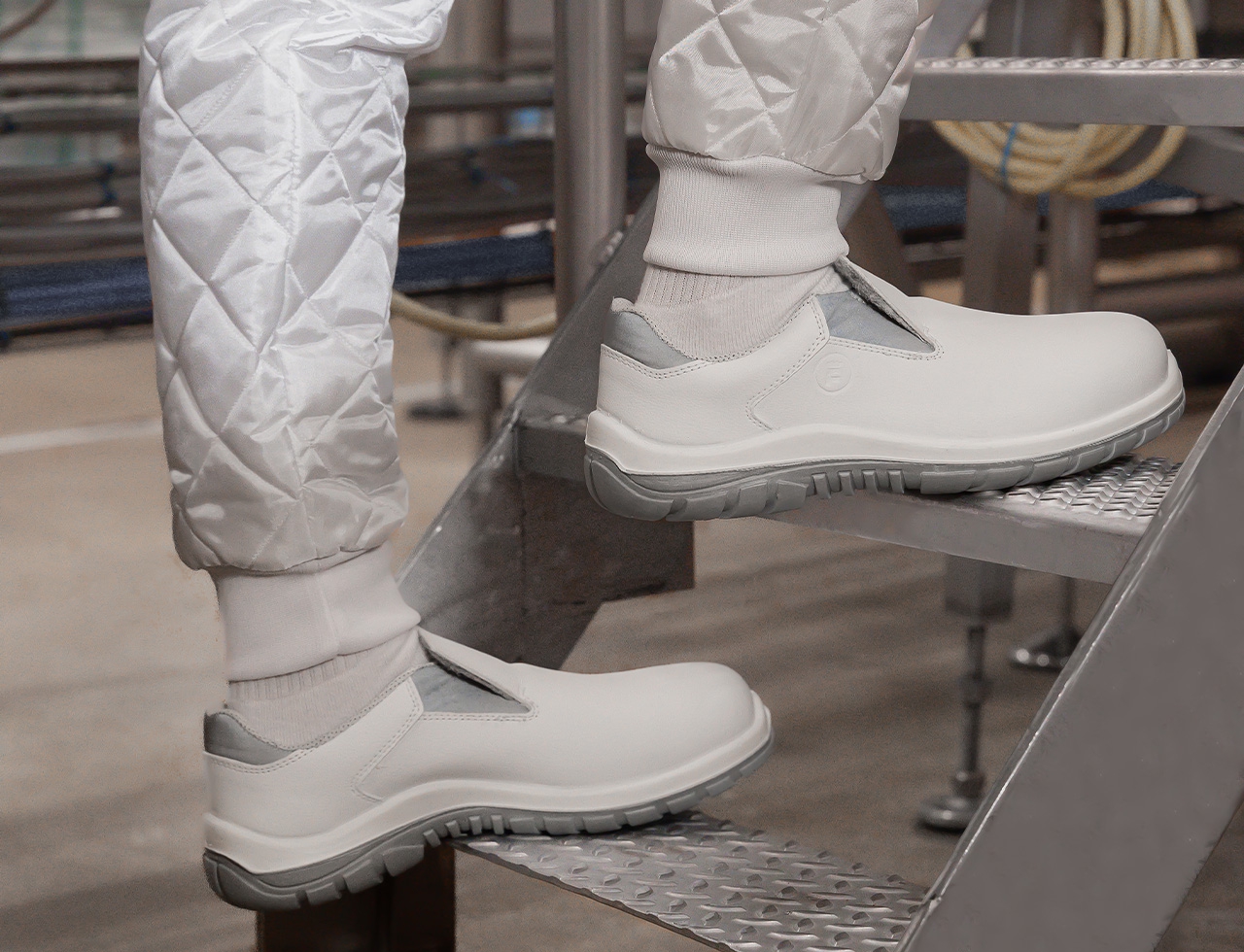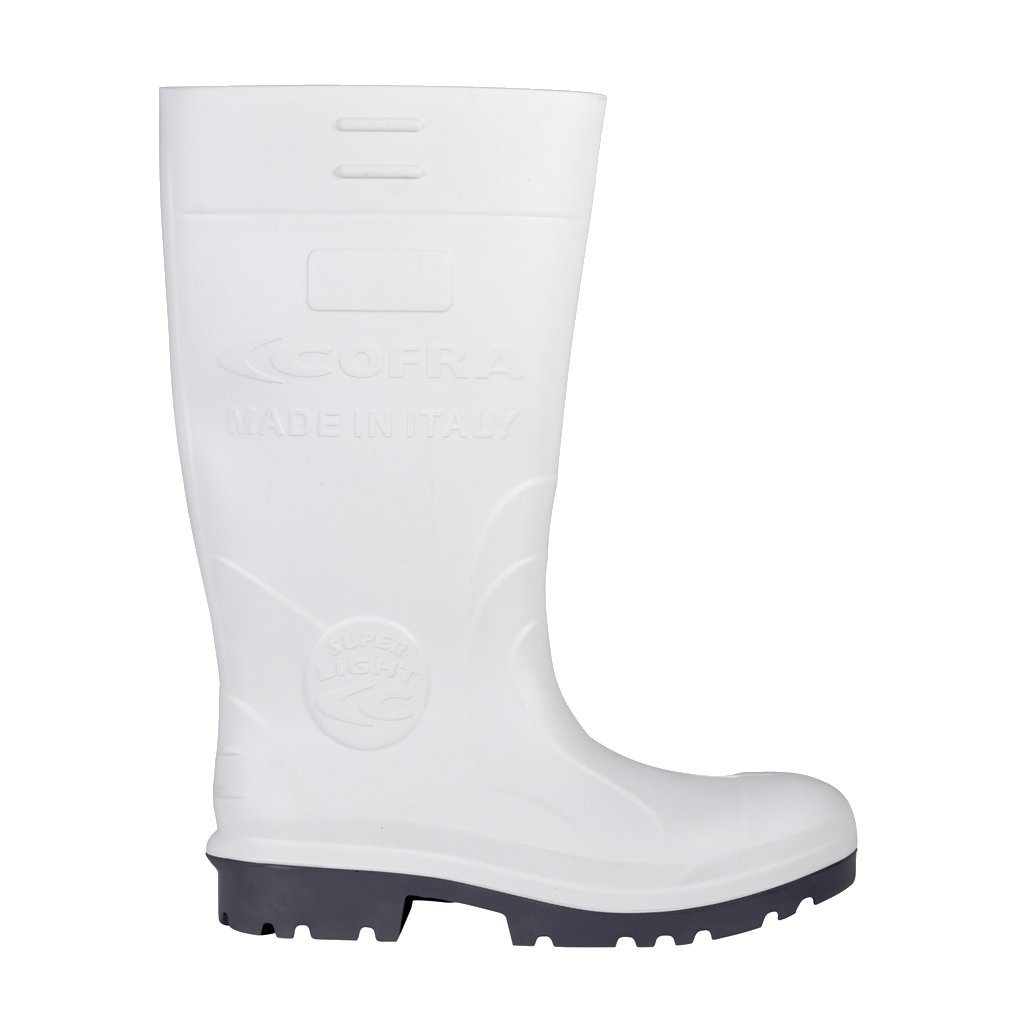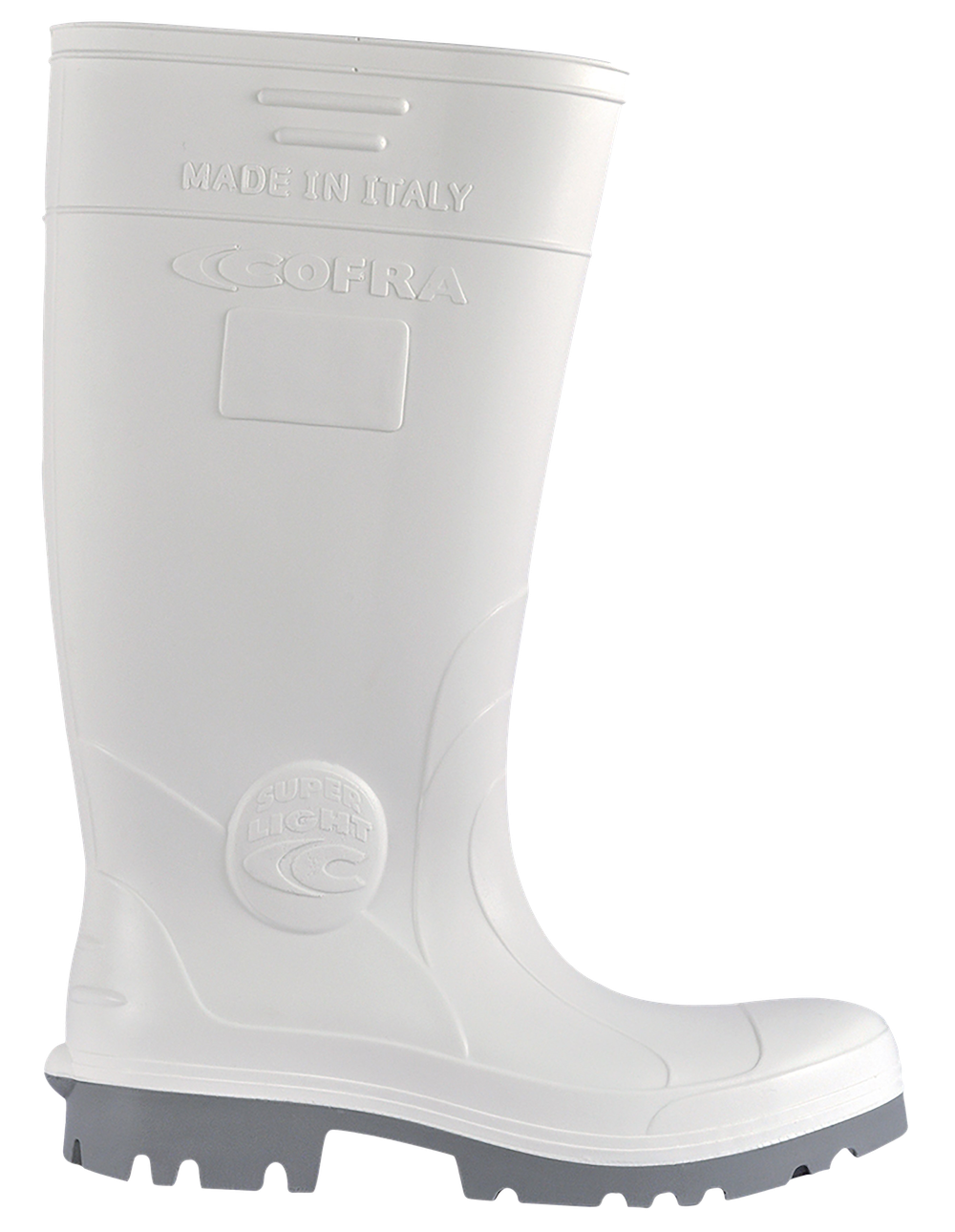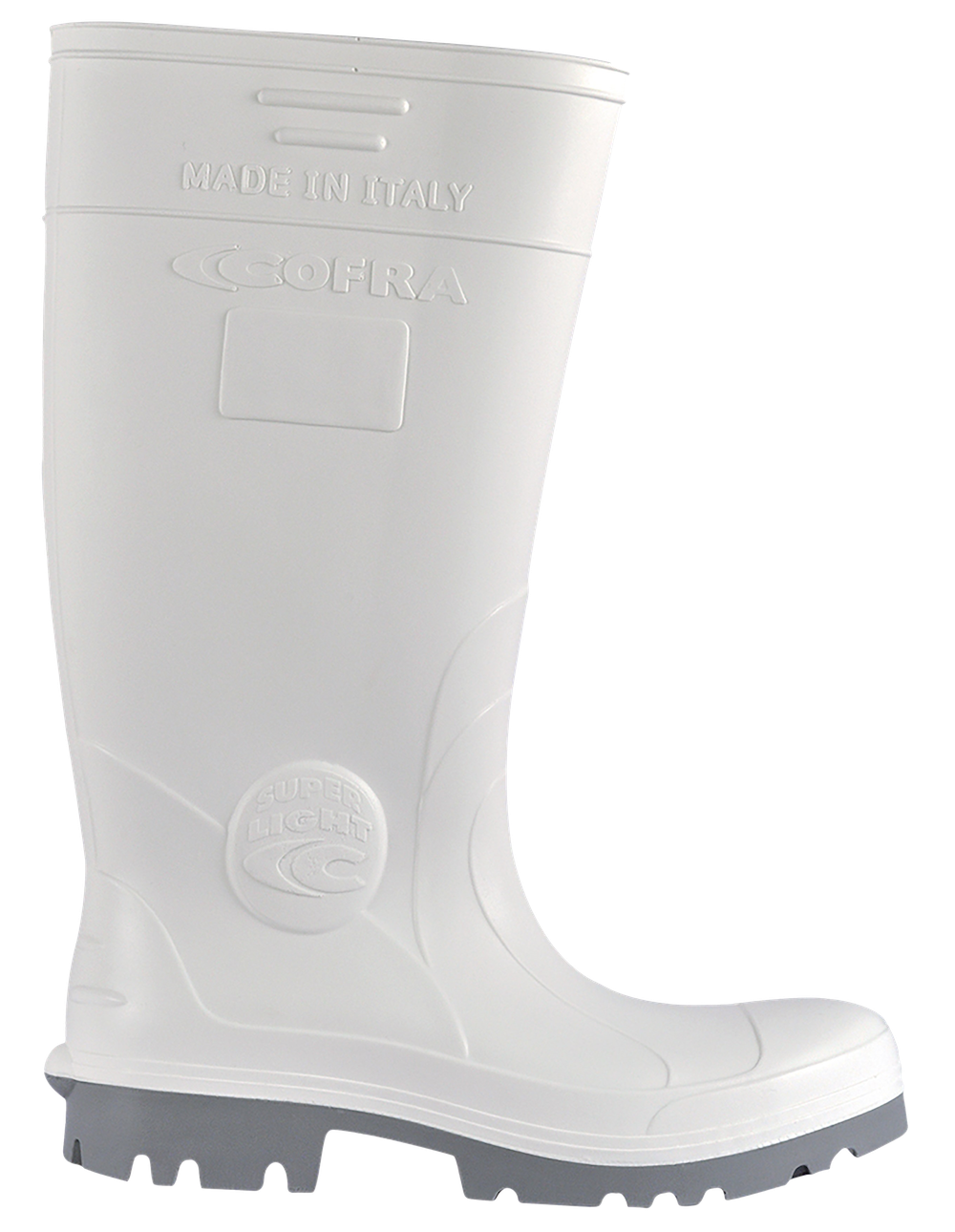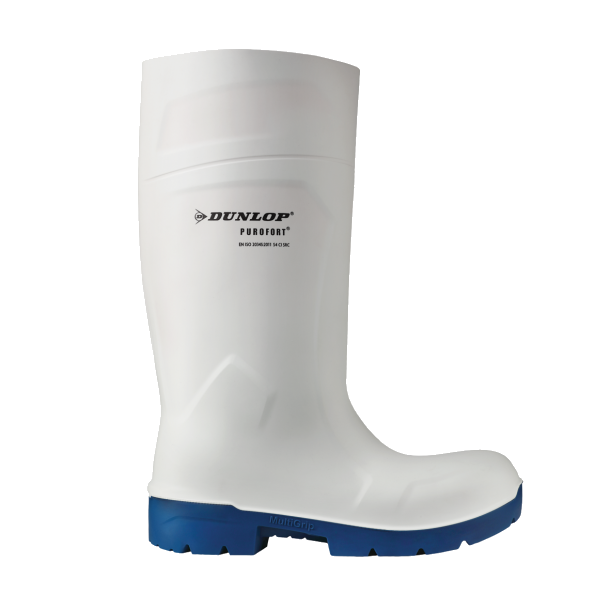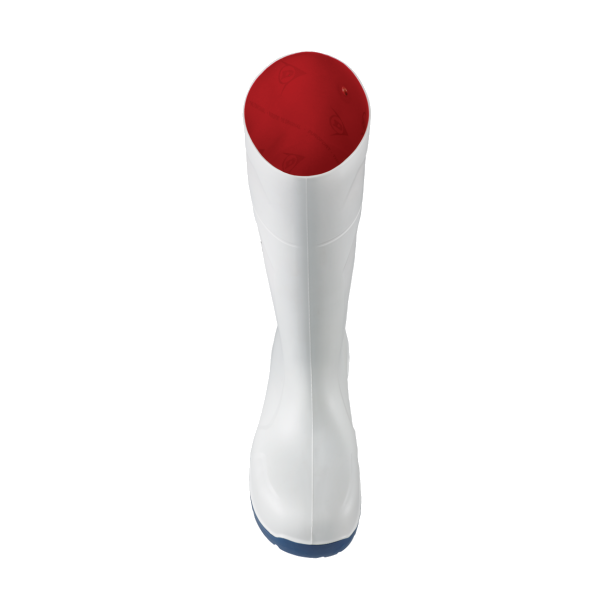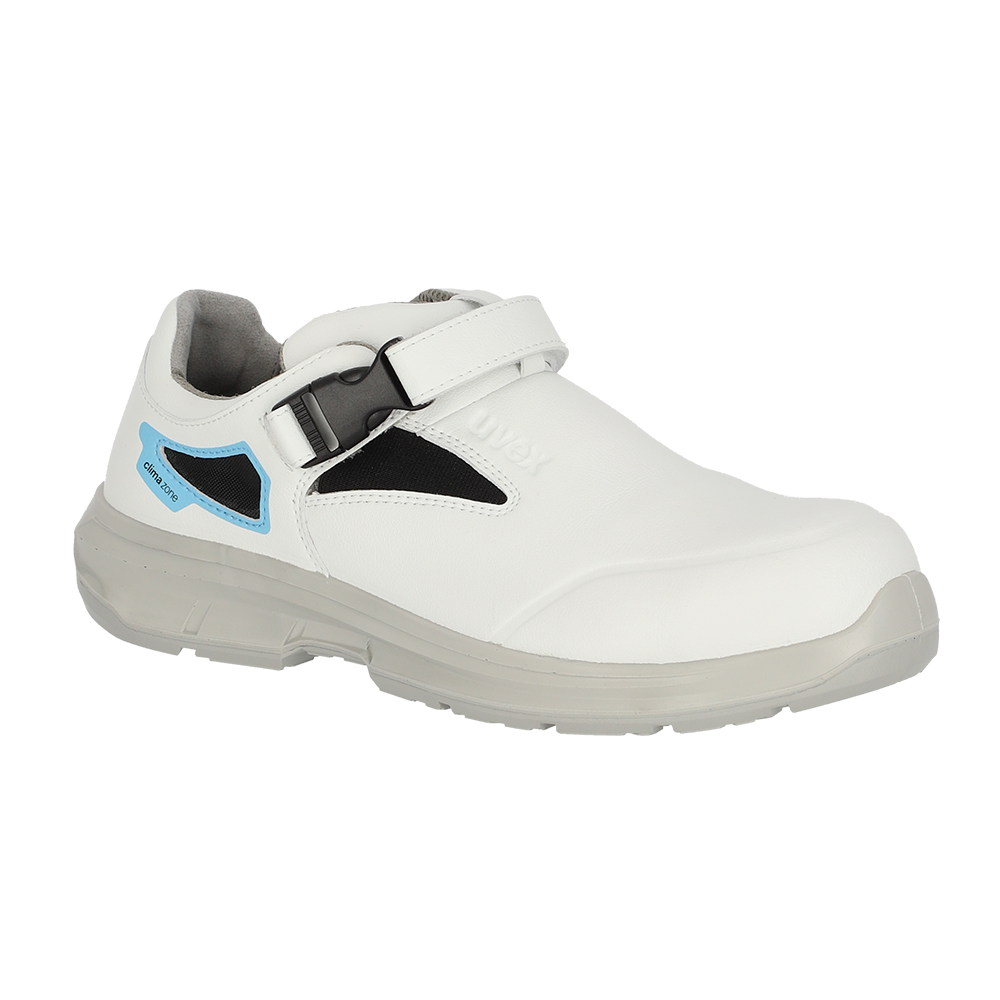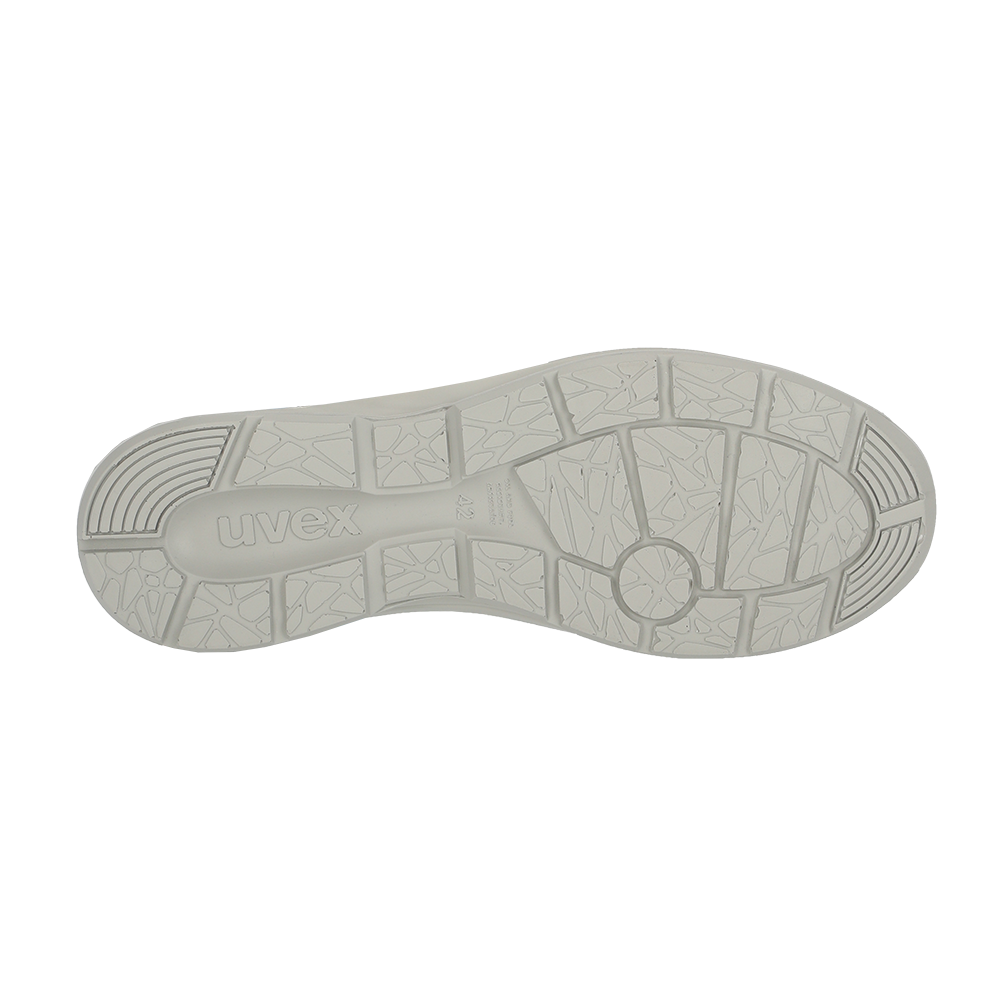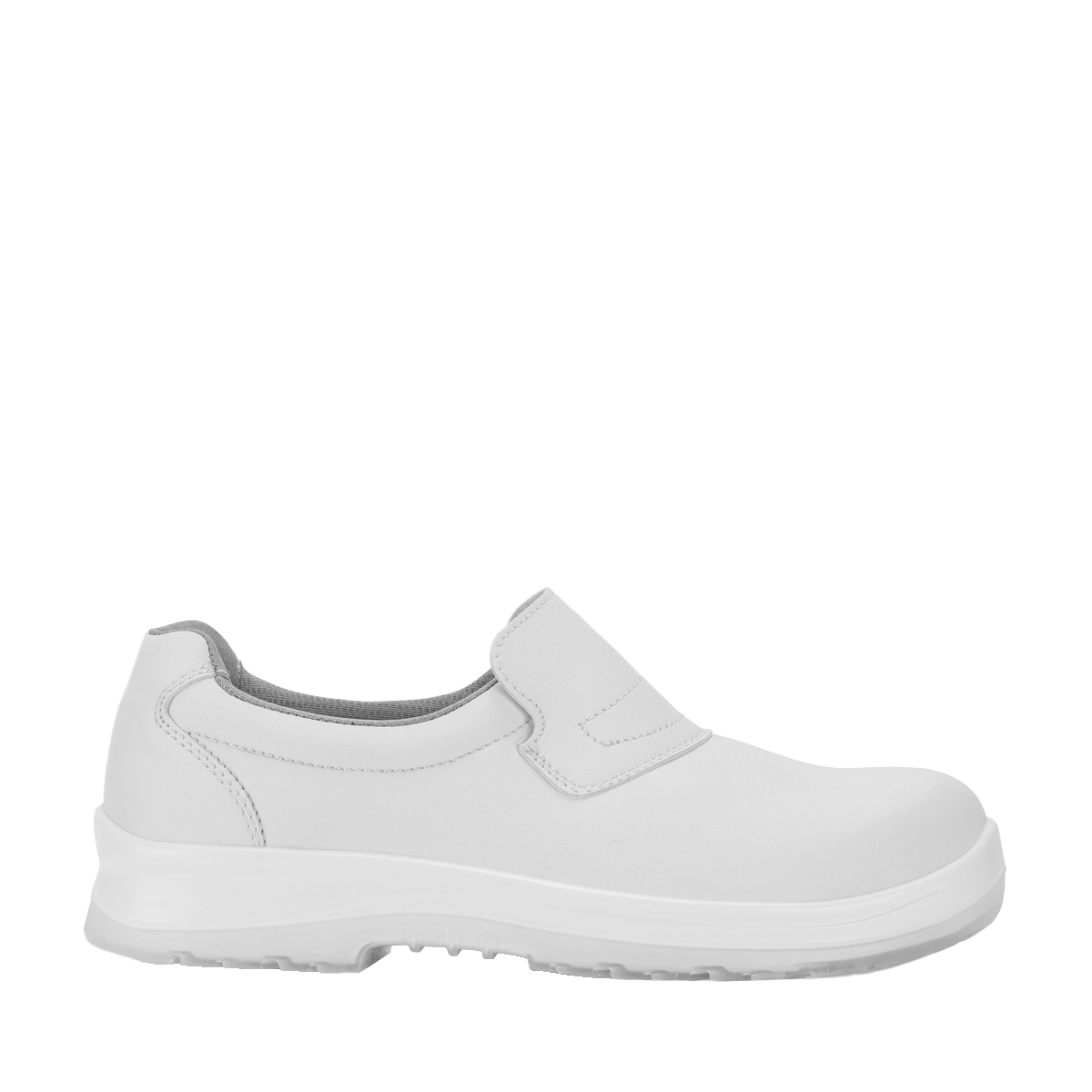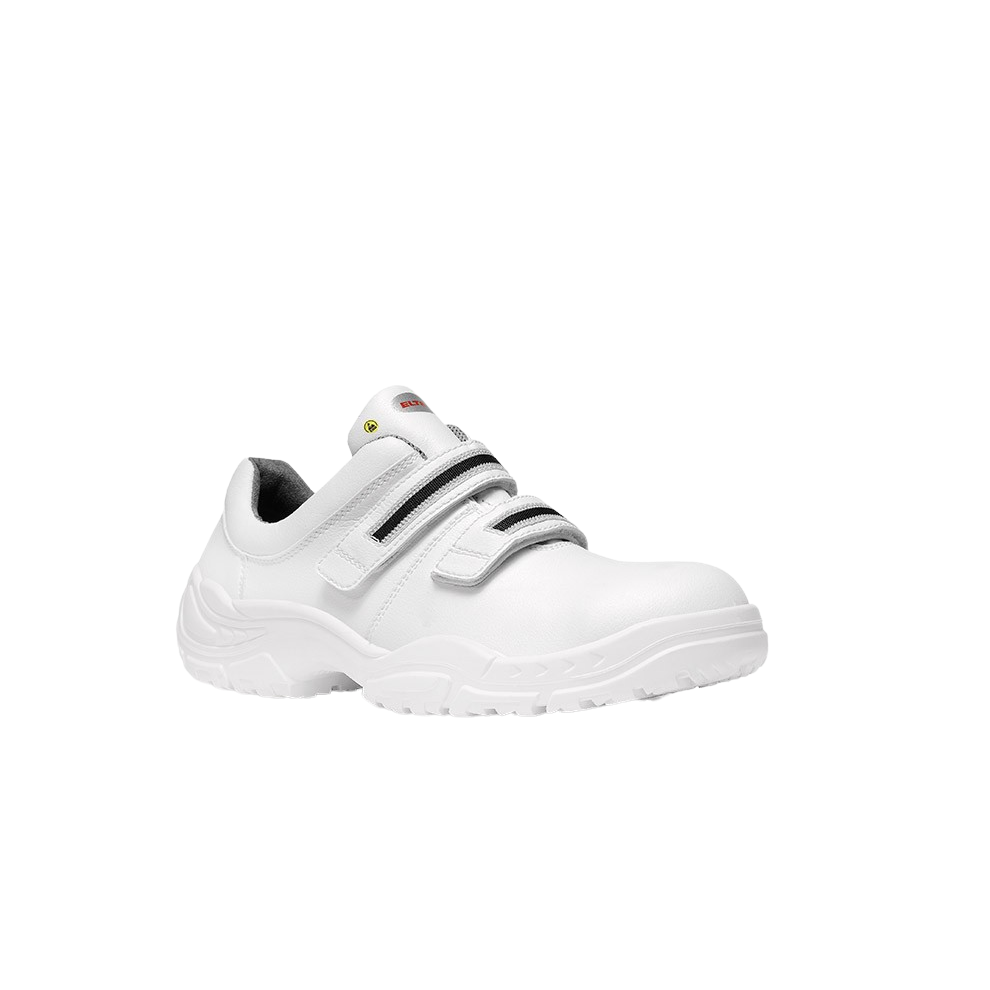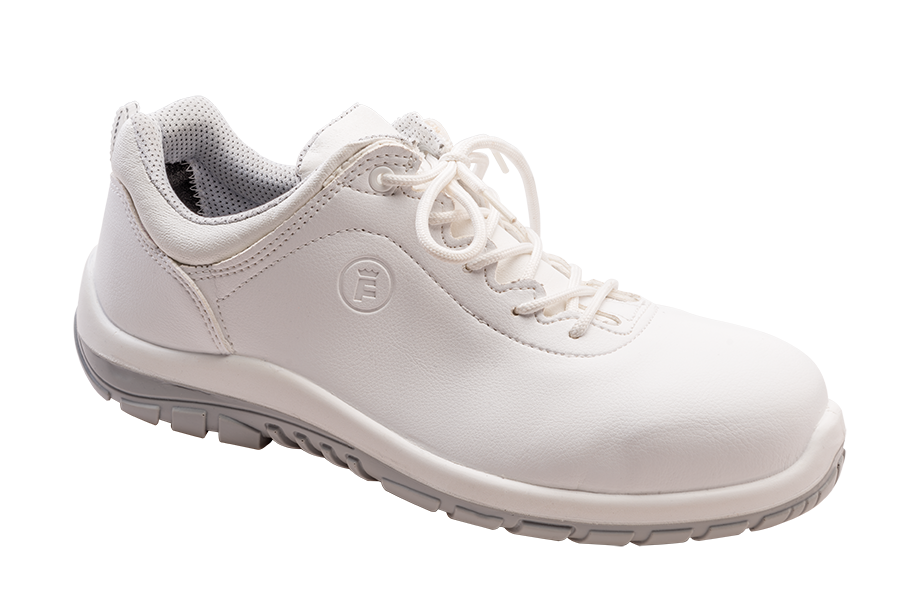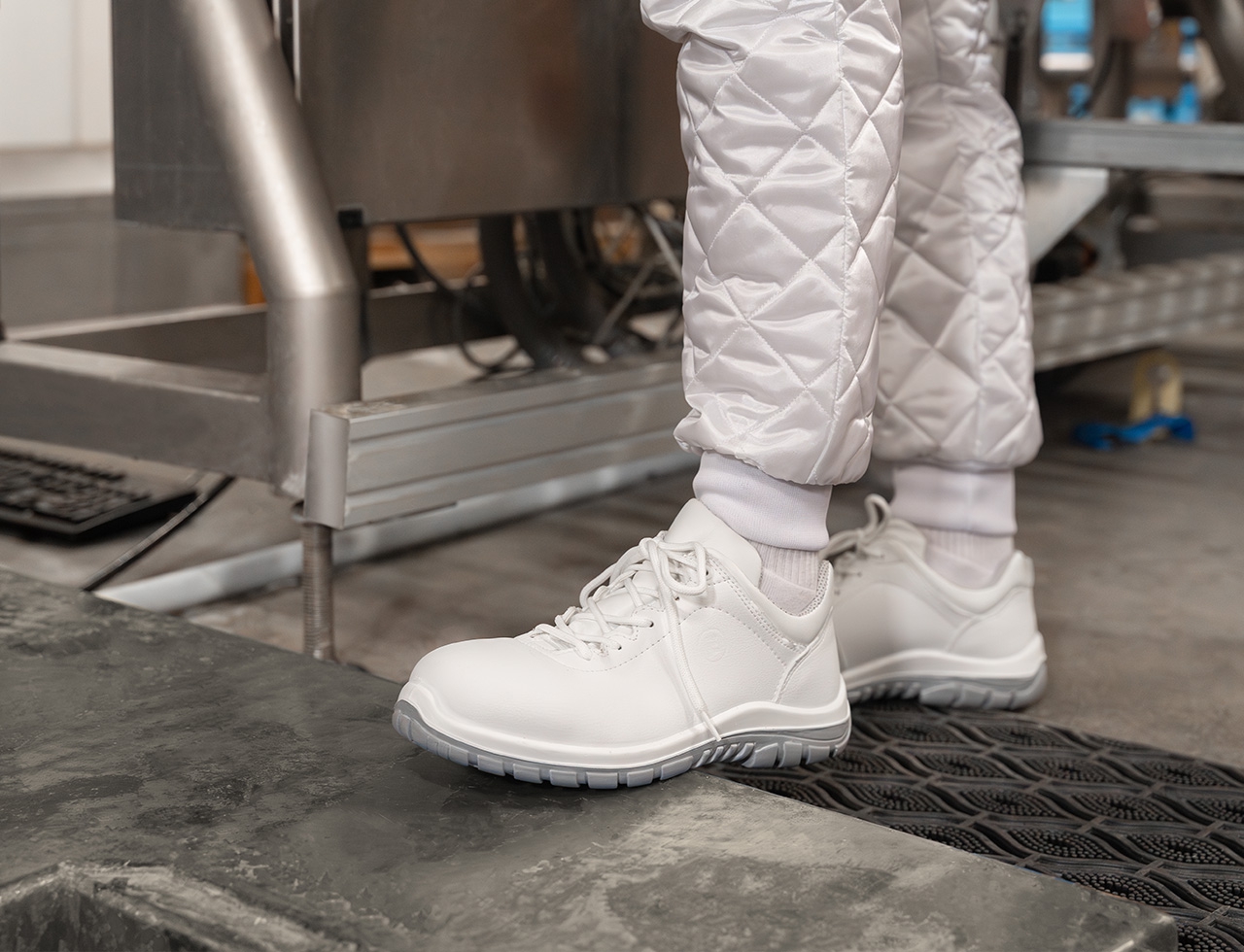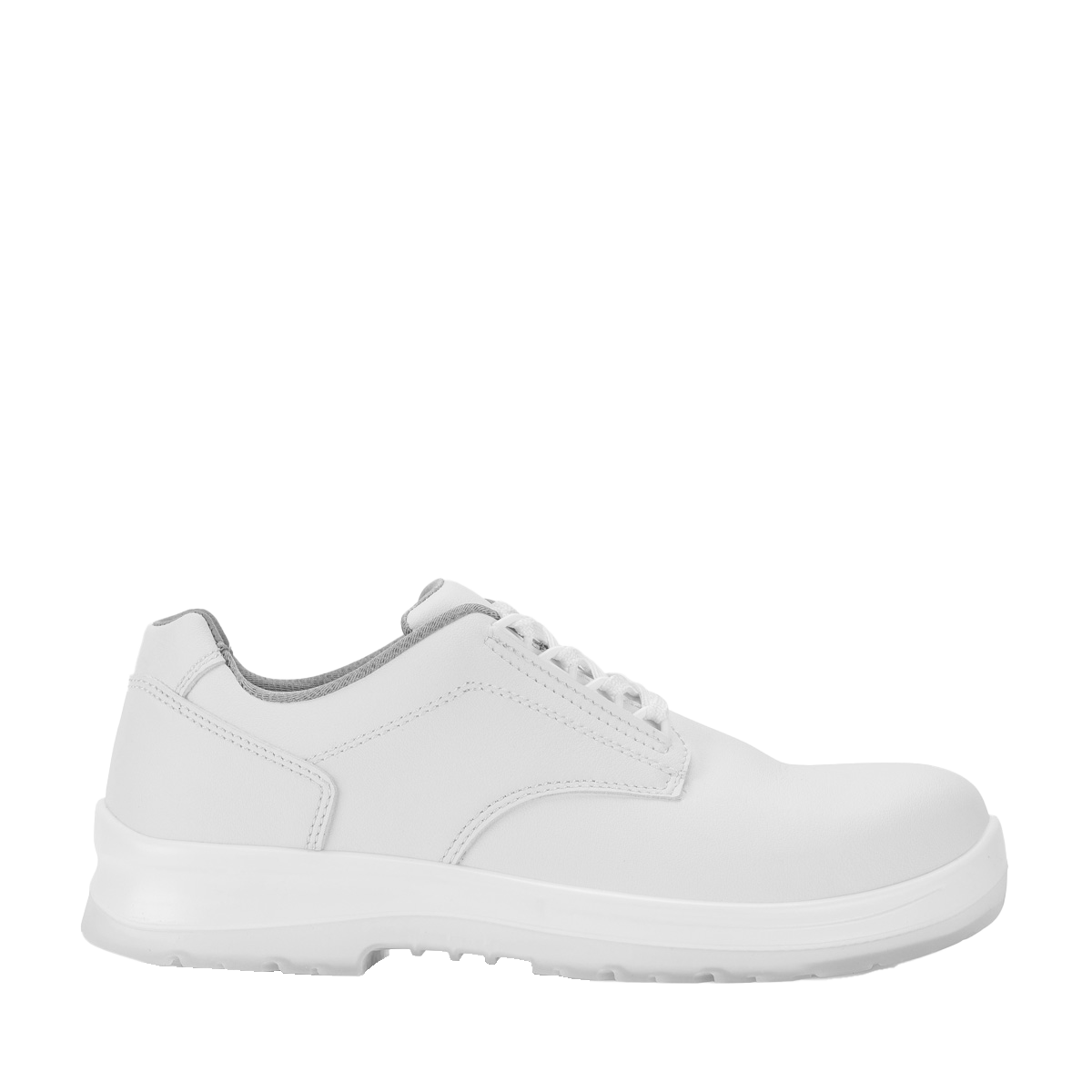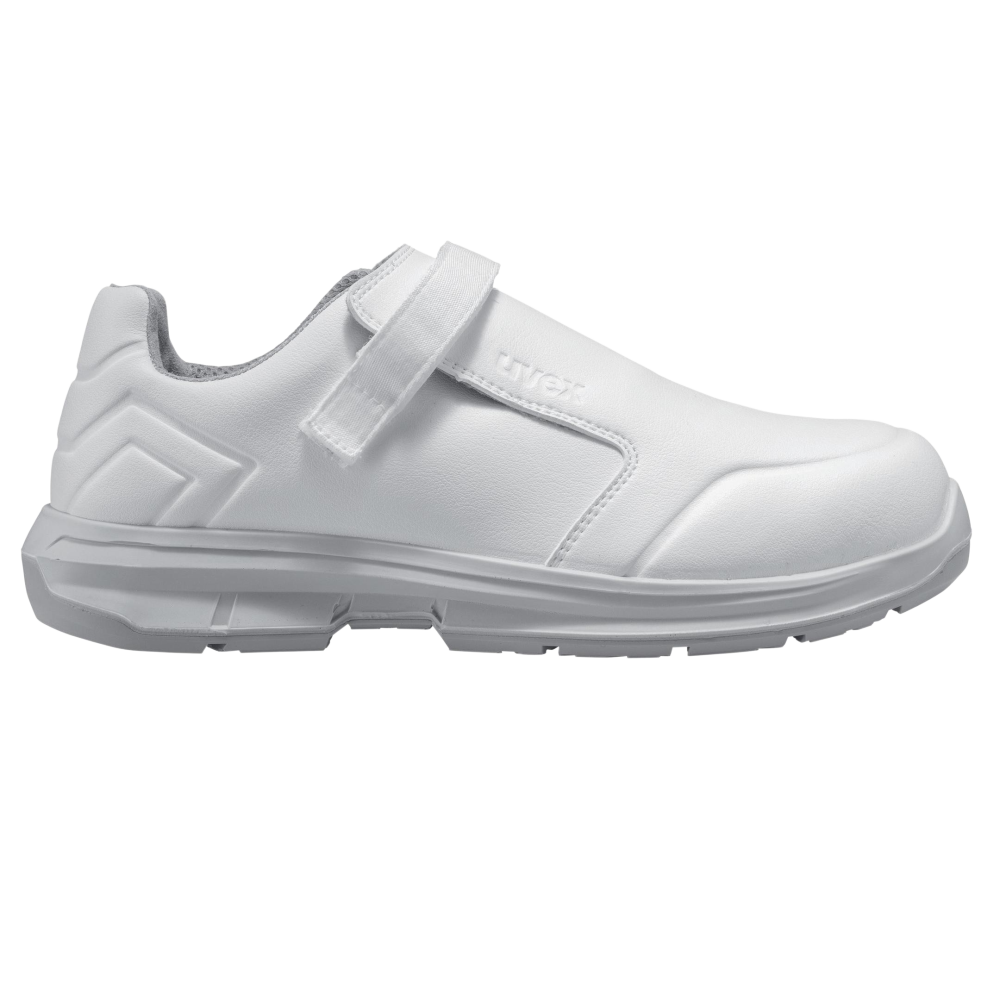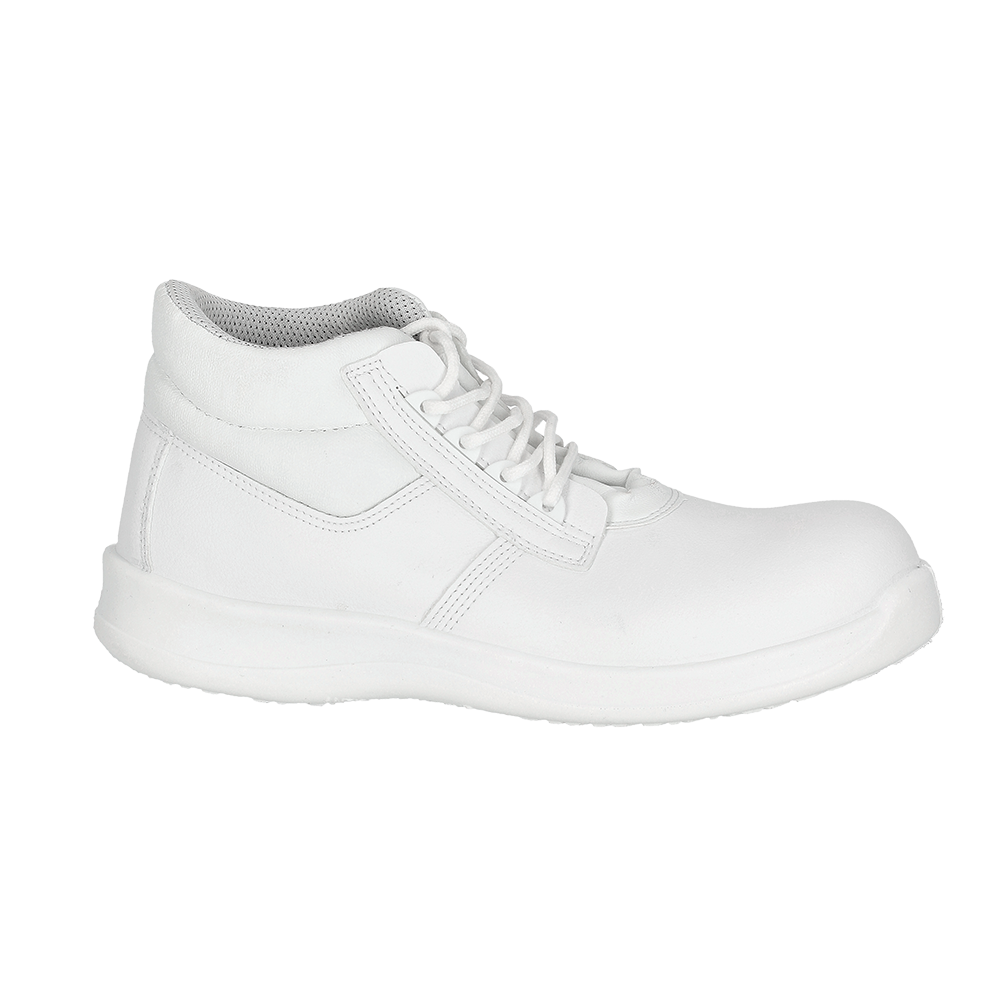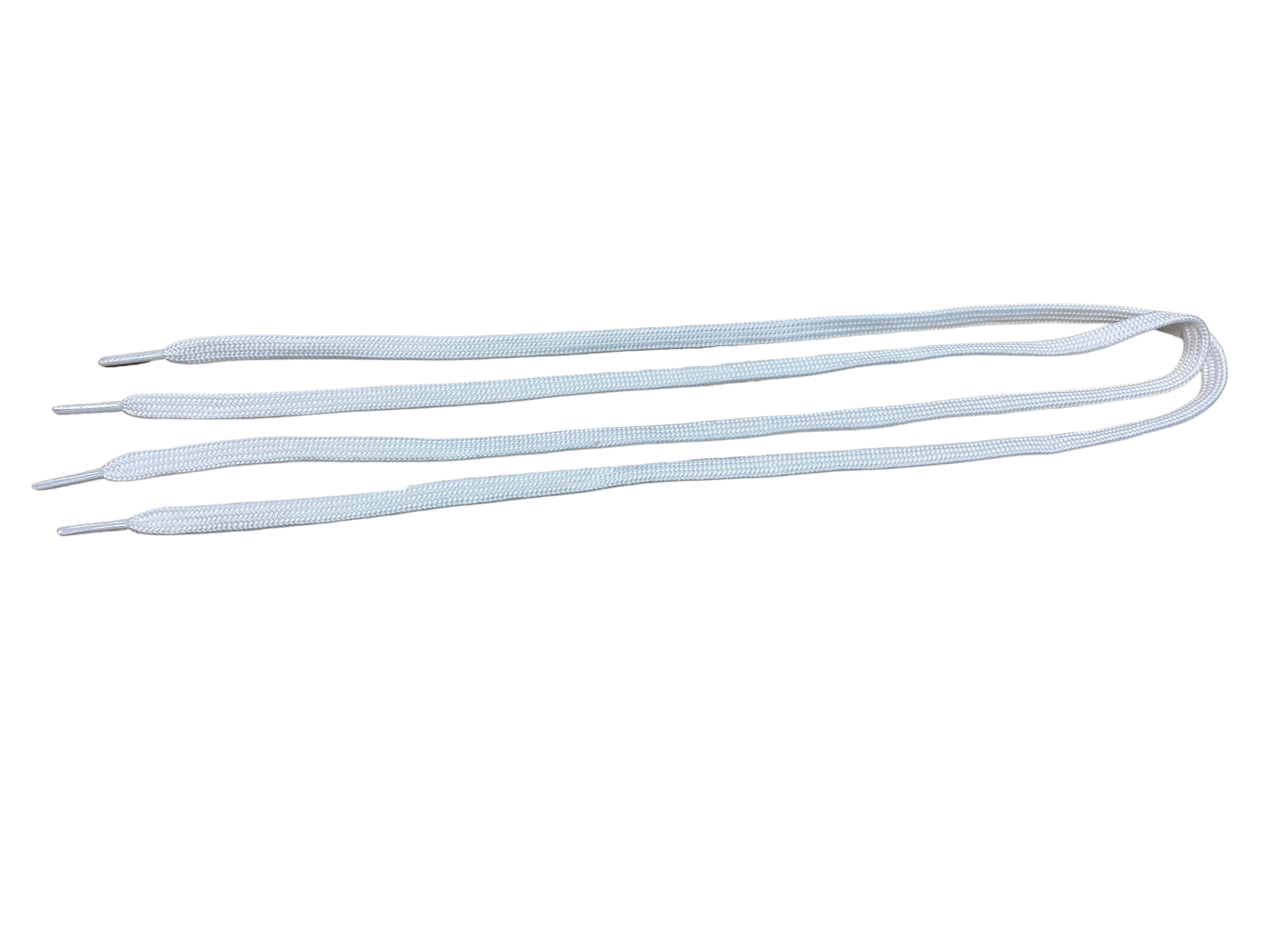






Foot Protection for Proper Hygiene at Work
In hygiene-sensitive areas such as food production, white work shoes and boots are the standard to quickly identify potential contaminations. Every stain becomes immediately visible.
Pourquoi les chaussures et les bottes de travail sont-elles obligatoires dans le secteur de l'hygiène ?
Occupational and safety footwear worn in the food industry and in the hygiene sector must withstand high levels of stress. They must help to ensure high hygiene standards. Wearing comfort, health protection and the suitability of the shoes for everyday use are also important.
With the help of the HACCP concept, risks in the production and processing of food in the company can be identified and the appropriate measures can be introduced to minimise them.
Occupational and safety footwear must not only fulfill necessary safety criteria. They should also ensure wearing comfort, health protection and suitability for everyday use.
DIN 10524 - "Food Hygiene - Workwear in Food Establishments"
The requirements regarding suitable and clean work clothing are laid down in DIN 10524.
- EN ISO 20345 o. DIN EN 345-1 = Safety Shoes
- EN ISO 20347 o. DIN EN. 347-1 = Work Shoes
What does S1, S2 and S3 mean?
The abbreviation S primarily describes the safety category for the safety shoe in general. Here, it is subdivided into different categories.
Category S1
Safety shoes in the S1 category must be equipped with a protective toe cap that can withstand at least 200 joules of pressure. In addition, the shoe must have an antistatic sole and a closed heel area.
Safety shoes marked with a SB also have a protective toe cap, but no closed heel area.
Shoes with the S1P category are very modern shoes. They are sporty on the outside and thus resemble normal sports shoes. Due to the materials used, the shoe is very light and therefore very comfortable. They are mostly metal-free.
The S1P category describes safety shoes with toe caps that are additionally equipped with a penetration protection. Instead of a steel toe cap, the toe protection here is made of plastic, which makes the shoe lighter and more flexible.
Category S2
Safety shoes of category S2
have a protective toe cap and are water penetration resistant (waterproof for at least 1 hour). If this shoe is made of polymeric material, it has protection class S4. (Rubber boot)
Category S3
S3 safety shoes have a protective toe cap, are puncture-resistant and waterproof. In addition, the shoes have an antistatic sole with a slip-resistant outsole. The outsole has a stronger tread than e.g. safety shoes of category S1. If this shoe is made of polymeric material, it has protection class S5. (Rubber boot)
EN ISO 20347
Occupational shoes are usually without toe caps; if a cap is present, no requirements are placed on it. The use of the respective shoes depends on the type of grant and performing work of the wearer. Additional requirements may be necessary for all shoes:
- 0B: Work shoes that comply with the basic requirements of EN ISA 20347.
- 01: Work shoes like 0B, which are additionally antistatic and fuel-resistant and have an energy capacity in the heel area. The heel area must be closed.
- 02: Work shoes like 01 that are additionally waterproof.
- 03: Work shoes like 02, which additionally have a puncture-resistant midsole and a profiled outsole.
What is the difference between a work shoe and a safety shoe?
The difference between the work shoe and the safety shoe is that safety shoes are equipped with a protective cap made of metal or plastic in the front part of the shoe to protect the toes.


